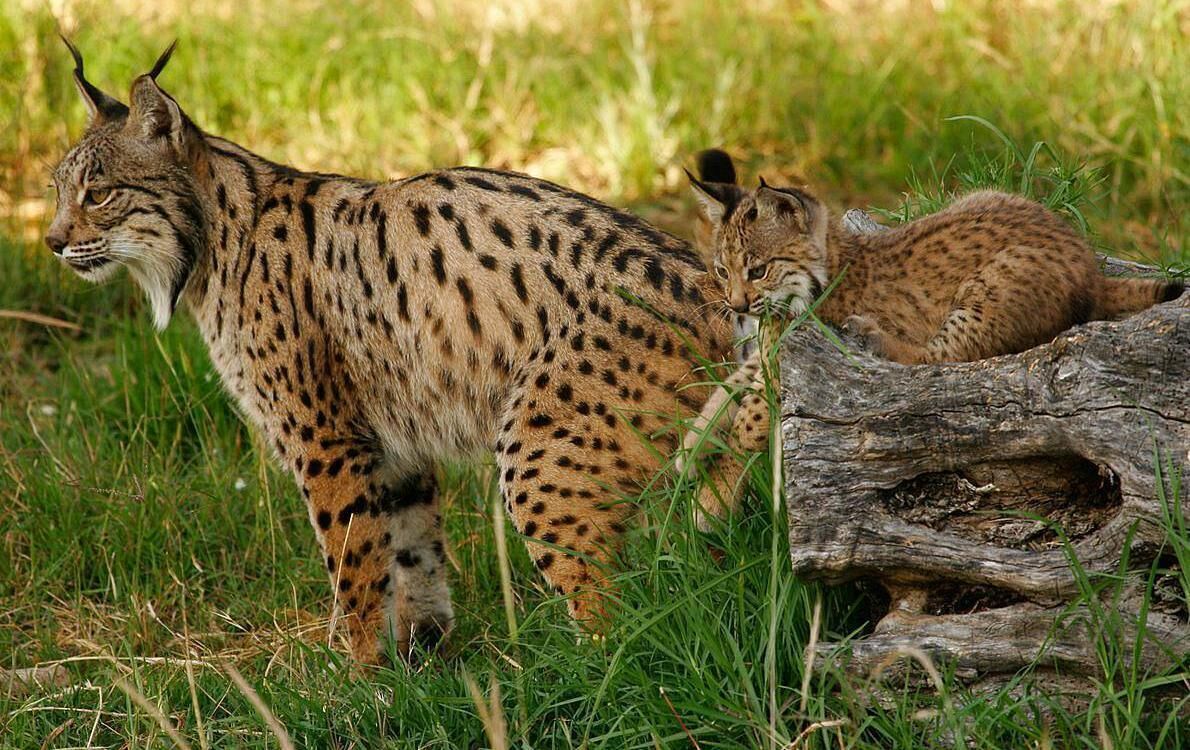Iberian lynx saved from extinction... for now

Iberian lynx rebounding thanks to conservation action. Image: IUCN
Europe’s rarest mammal, the Iberian lynx, has been saved from extinction. This elusive cat had looked like becoming ‘the missing lynx’. It disappeared from Portugal in the 1990s, when fewer than a hundred remained in two areas of northwest Spain.
Thanks to captive breeding programmes, and tender loving care, there are now more than 2,000 of these carnivores in the wild. Last June, the International Union for the Conservation of Nature changed the Iberian’s conservation status from ‘Endangered’ to ‘Vulnerable’. The sick mammal of Europe is out of intensive care.
A closely related species, the Eurasian lynx, is not such a ‘delicate flower’. Labrador-sized, larger than its Hispanic cousin, it used to be found throughout Europe. This stealth hunter and pursuit predator, capable of jumping 3 metres into the air to catch birds, takes mainly rabbit-sized mammals. It can, however, kill creatures as big as deer. The risk to livestock, and demands for its pelt, led to persecution; the lynx retreated to remote forests and mountains.
The Wild Ireland website refers to it as ‘the original Celtic tiger’. In 1934, a 9,000 year-old jaw bone of a young lynx was unearthed during a dig at Kilgreany Cave, County Waterford. The find suggested that this apex predator may once have been an Irish species but, as Aristotle said, ‘one swallow does not a summer make’. There is no word for ‘lynx’ in Irish, which suggests that these cats had gone before humans settled here.
The Eurasian species survived in Britain up to Roman times. Suggestions that it be reintroduced there have upset livestock owners.
We welcome the news this evening that two additional lynx released illegally in the Cairngorms National Park have been successfully trapped.
— Cairngorms National Park (@cairngormsnews) January 10, 2025
Our full statement: https://t.co/8ymPVjLcP4 https://t.co/C9dbNjsbTE
Unknown enthusiasts, however, took the law into their own hands recently — they released some illegally into the Cairngorms National Park. Four of the cats were captured and taken to Edinburgh Zoo. They were said to have been starving. One died.
Long-legged, with a yellow-brown pelage and leopard-style spots, lynx have conspicuous upward-pointing ear tufts. ‘Lynx’ comes from an Indo-European root, meaning ‘bright’, probably referring to reflective eyes. The three northern species have fur-covered ‘snow-shoe’ paws.
The North American bobcat is a close relative of the two European species. As the name implies, it is also short-tailed. Indeed, all four extant lynxes have odd-looking stubby tails, classic cases of ‘Hamlet without the Prince’.

A very distant relative, known as a ‘stubbin’ in Manx Gaelic, is also tailless. In the early 19th century, a mutation occurred, spontaneously, in a domestic pussy living in the Isle of Mann. Its descendants have short tails, or no tails at all.
We humans lost them, but tails are useful organs for communication and balance. Cats dogs and peacocks ‘talk’ to each other using their tails. Snow leopards, great tight-rope performers, have extra-long bushy ones, helping them negotiate treacherous cliffs in the Himalayas. The red squirrel’s tail is a virtual wing. Lacking a respectable tail, however, hasn’t prevented the Manx cat from competing successfully with its normal-tailed peers.
A mutation, rather than natural selection, seems to have been responsible for the reduced size of lynx tails. The mutation must have arisen, possibly as much as four million years ago, in an ancestor of the lynx species alive today.
- Iberian lynx rebounding thanks to conservation action — IUCN press-release. June 2024







